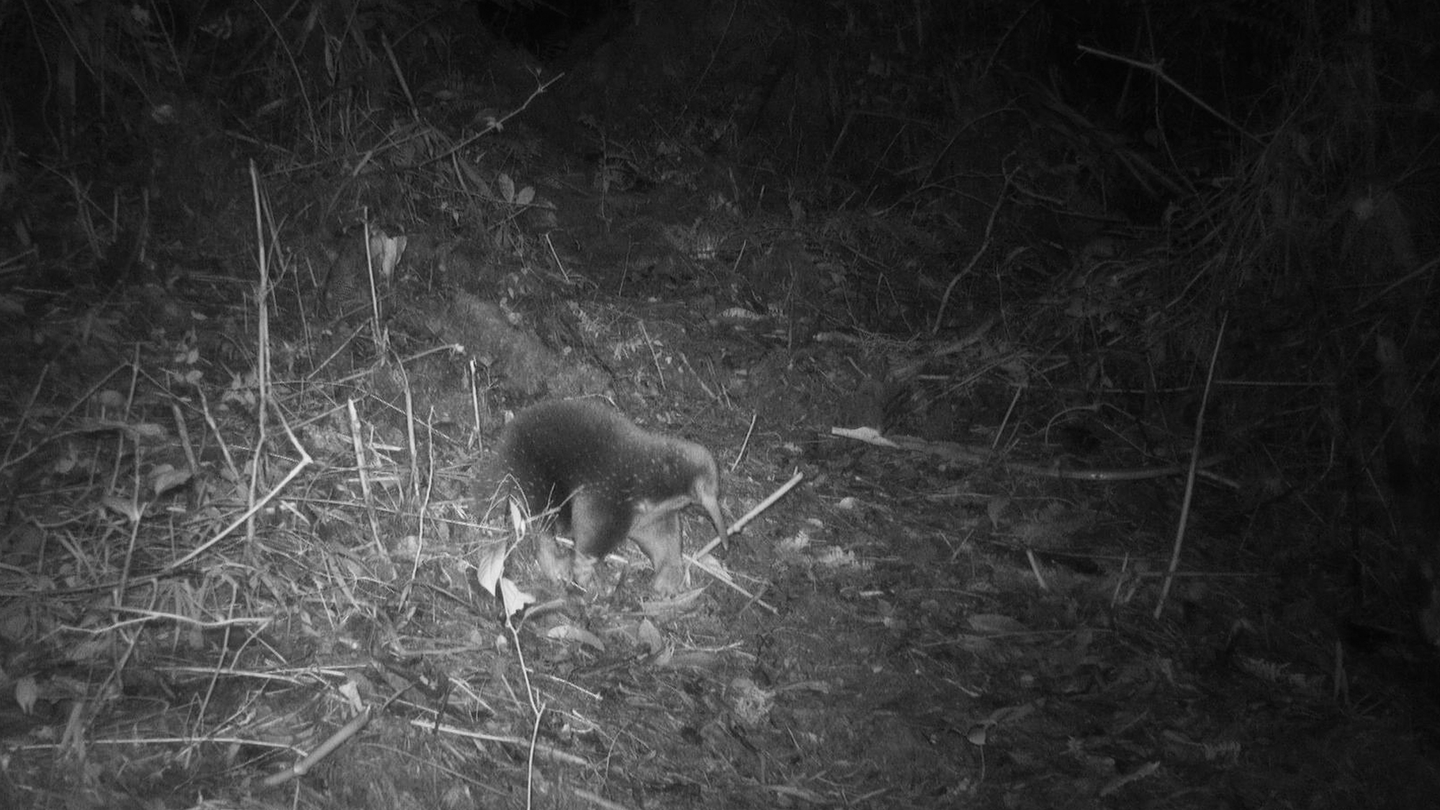Elusive egg-laying mammal caught on camera for the first time
Rediscovered after 60 years, the funky critter is named for Sir David Attenborough and is one of only five species of monotreme remaining on Earth.

For the first time in over 60 years, a rare egg-laying mammal has been spotted by scientists. Attenborough’s long-beaked echidna (Zaglossus attenboroughi) was caught on camera during a major expedition in the Cyclops Mountains in Indonesia’s Papua Province.
[Related: Dams are hurting this enigmatic Australian species.]
A sacred animal
The long-beaked echidna is named for wildlife documentarian and conservationist Sir David Attenborough and has only been recorded by scientists once in 1961. It is considered a monotreme, or an evolutionary distinct group of mammals who can lay eggs. The platypus is also a monotreme and there are only five remaining species of these strange types of mammal on Earth.
They live in burrows and mainly eat insects, earthworms, and termites. They are listed as Critically Endangered on the IUCN Red List of Threatened Species and are only known to live in the Cyclops Mountains.
“Attenborough’s long-beaked echidna has the spines of a hedgehog, the snout of an anteater, and the feet of a mole. Because of its hybrid appearance, it shares its name with a creature of Greek mythology that is half human, half serpent,” University of Oxford biologist James Kempton said in a statement. “The reason it appears so unlike other mammals is because it is a member of the monotremes–an egg-laying group that separated from the rest of the mammal tree-of-life about 200 million years ago.”
The echidna also has cultural significance for the people in the village of Yongsu Sapari. They have lived on the northern slopes of the Cyclops Mountains for eighteen generations. Rather than fighting during conflicts, the tradition is for one party to go up into the Cyclops to find echidna while the other party goes to the ocean to search for a marlin. Both of these creatures were difficult to find and it would take decades to even whole generations to locate them. However, once they were found, the marlin and echidna would symbolize the end of the conflict.
Finding echidnas, whip scorpions, and forest shrimp
During an expedition that began in 2019, a group of scientists from institutions in multiple countries set up over 80 trail cameras. They did not see any signs of the echidna for four weeks of trekking through a “beautiful but dangerous land.” A sudden earthquake forced the team to evacuate, one team member broke his arm in two places, another contracted malaria, and another had a leech attached to his eye for a day and a half.
[Related: Meet the first electric blue tarantula known to science.]
On the last day of the expedition, they finally spotted Attenborough’s long-beaked echidna. The identification of the species was later confirmed by mammalogist Kristofer Helgen from the Australian Museum Research Institute.
In addition to this elusive egg-laying mammal, this expedition marked the first comprehensive assessment of mammal, reptile, amphibian, and invertebrate life in the Cyclops Mountains. They combined Western scientific techniques with the extensive local knowledge of Papuan team members. Among the new discoveries are several insect species that are completely new to science and an entirely new genus of ground and tree-dwelling shrimp.
“We were quite shocked to discover this shrimp in the heart of the forest, because it is a remarkable departure from the typical seaside habitat for these animals,” entomologist Leonidas-Romanos Davranoglou from the Oxford University Museum of Natural History said in a statement. “We believe that the high level of rainfall in the Cyclops Mountains means the humidity is great enough for these creatures to live entirely on land.”
Some other funky underground species including blind spiders, blind harvestman, and a whip scorpion were also found living in a previously unexplored cave system. The team hope that its rediscovery of Attenborough’s long-beaked echidna and all of these new species will help bring attention to the conservation needs of the Cyclops Mountains and Indonesian New Guinea.
CORRECTION November 19, 2023 3:55 PM EST: An earlier version of the article summary said the animal was named after Richard Attenborough. Zaglossus attenboroughi is named for Sir David Attenborough. We regret the error.